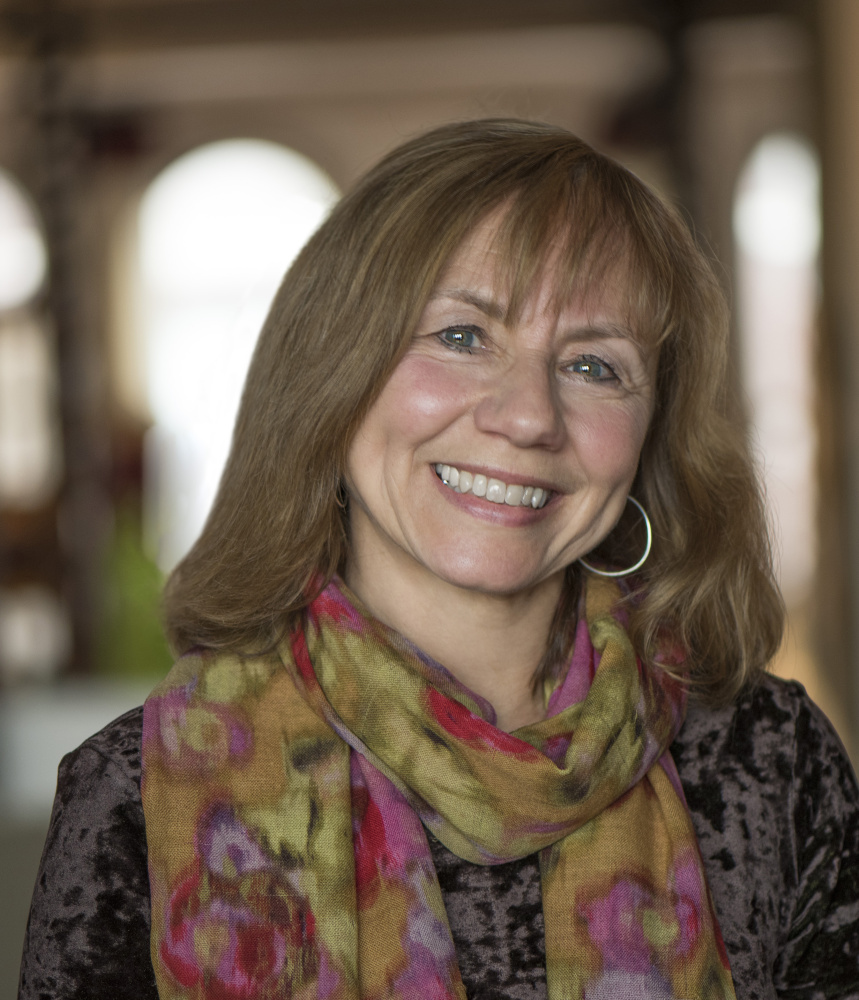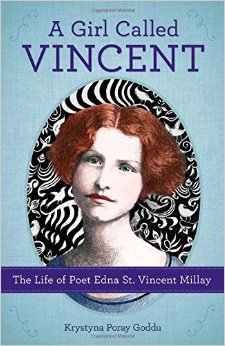In her introduction, Krystyna Poray Goddu describes her discovery of Edna St. Vincent Millay’s poetry as a 12-year-old, in a scene likely to be re-created by young readers of “A Girl Called Vincent”: In an attic bedroom, pre-adolescent drama and dreams as company, Goddu read and reread Millay’s poetry, “feeling chills and heat and fascination.”
“A Girl Called Vincent” is a biography of Millay, written for middle-schoolers and younger teens. Goddu drew upon archives from Vassar College Libraries and the Library of Congress to include images and quotations from Millay and her family and friends. She also includes excerpts from Millay’s poems throughout the book.
The story is chronological, beginning with Millay’s birth in Rockland, Maine, and ending with her death in Austerlitz, New York.
Until she left for college at Vassar in 1913, Millay lived with her mother and two sisters, mostly in coastal Maine, which proved the perfect backdrop to her childhood, containing both the romance and struggle that marked much of the writer’s life.
When Millay was still a child, her mother asked her father to move out. Millay’s mother supported the family as a nurse and her jobs often kept her away from home for days, sometimes weeks, at a time. Those early years of responsibility and autonomy shaped Millay’s personality, strengthening her independent spirit.
Millay’s relationship with her mother is central to her development as a writer. Her mother was passionate about the arts and taught her girls to “sing, play the piano, perform, and write poetry when they were very young.” Without explicitly addressing it, Goddu highlights the historical pressures applied to women and the feminist qualities expressed by both Millay and her mother.
More than half of the book focuses on the first 25 years of Millay’s life, exploring her early development as a poet, adolescent yearning for love and adjustment to life in New York.
Excerpts from Millay’s diaries reveal a depth of thought and feeling knocking up against fabricated melodrama as she wrote to an imaginary lover. Her own words make Millay relatable, even as she is making waves in the literary world at age 20.
The quotations Goddu carefully selected to bring Millay’s voice to the story clearly reveal her personality. She responds to an editor, correcting his salutation: “It may astonish you that I am no ‘Esquire’ at all, nor even a plain ‘Mister’; in fact, I am just an aspiring ‘Miss’ of twenty.”
And in her history entrance exam for Vassar, Millay wrote, “At precisely this point the pleasant lady in an Alice-blue coat … requests us all to bring our papers to a close. As I know a great deal about American history which I haven’t had a chance to say, I am sorry, but obedient.”
Even as she includes these charming excerpts from Millay’s own writing, Goddu does not shy away from the challenging realities of Millay’s life.
She documents her financial struggles, tension between independence and relationships with men, pain, a reliance on morphine and drinking, and hospitalizations for both physical and mental ailments.
It’s no surprise that Goddu was a school librarian and middle-school writing teacher – she has written a book that will engage both students and educators.
As all good stories do, “A Girl Called Vincent” creates opportunities for readers to experience a different time and place through someone else’s life.
The care and interest Goddu conjures for Millay will translate to social issues, historical events and poetry itself.
Heidi Sistare is a writer and social worker who lives in Portland. She attended the Salt Institute for Documentary Studies and has work published in The Rumpus, Slice Magazine and other publications. Contact her at:
heidi.sistare@gmail.com
Twitter: @heidisistare
Send questions/comments to the editors.




Success. Please wait for the page to reload. If the page does not reload within 5 seconds, please refresh the page.
Enter your email and password to access comments.
Hi, to comment on stories you must . This profile is in addition to your subscription and website login.
Already have a commenting profile? .
Invalid username/password.
Please check your email to confirm and complete your registration.
Only subscribers are eligible to post comments. Please subscribe or login first for digital access. Here’s why.
Use the form below to reset your password. When you've submitted your account email, we will send an email with a reset code.